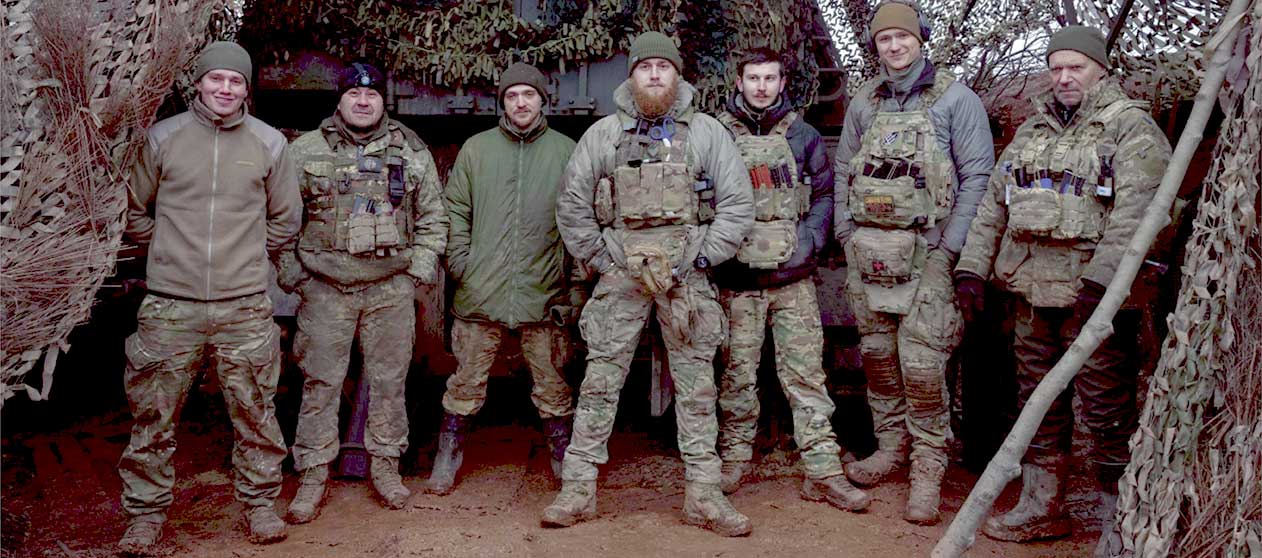
Only two weeks ago, the Biden administration lifted its ban on the use of U.S. arms by Ukraine inside of Russia. It also said U.S. troops, under the umbrella of NATO, could even end up directly battling against Russians inside of Ukraine.
To add insult to injury this week, the Biden administration has now lifted its ban on supplying U.S. weapons directly to the fascist Azov Battalion. Two years ago, Democratic Rep. Ro Khanna, citing the fascist ideology of the Azov Battalion, put forward legislation in Congress that forbade sending of weapons to the neo-Nazi group.
The Azovs were notorious for training fascists from all over the world. The leader of the neo-Nazis that marched in the deadly torchlight parade in Charlottesville several years ago boasted that he had been “trained” by the Azov Battalion in Ukraine.
The Biden administration assured Congress that it would abide by the policy of no weapons for the fascists but has now decided to reverse that policy. It has now decided to provide both weapons and training directly to the Azov group, according to reports in the European press and news outlets in the U.S.
In the past, the Biden administration had said it was banning the sending of weapons to the Azov Battalion because of both the fascist origins and the current fascist nature of the organization.
The Azov Battalion was formed in 2014 as the result of a merging of a variety of neo-Nazi organizations. The groups, including Azov, were sent by the coup government in Kiev to fight separatists in eastern Ukraine. The Russian-speaking people in the East, forbidden by the right-wing government in Kiev to even speak their own language, had the backing of Russia.
Over the next several years, some 15,000 were killed in fighting between the fascist militias and the armed forces of the right-wing Kiev government that had been installed in a coup backed by the U.S. on one side and Russian-backed separatist groups on the other. The coup replaced the legitimately elected, although corrupt, government of President Viktor Yanukovych.
His government had refused to agree to austerity demands coming from the European Union as a condition of Ukrainian membership in that organization. When they tried to strike an economic deal with Russia instead, the U.S. and other European countries backed the 2014 overthrow of his government.
Sent the militias to the East
The new right-wing government sent the militias, including the Azov Battalion, to put down the revolts in the East by the Russian-speaking Ukrainians. The government also allowed individuals associated with Azov and other fascist groups to burn alive the trade unionists they had locked into a building where they were meeting in Odessa. When people jumped from windows to save their own lives, the fascists beat to death anyone left alive on the pavement outside.
Almost immediately after the right-wing U.S.-backed coup took place in Kiev, Human Rights Watch began raising alarms about Azov. The human rights group said its investigation of Azov showed the allegations of fascism and of killing and other abuses by the organization were credible.
Members of the group could literally shoot opponents of the coup government on the streets with no official repercussions.
Attempts by Azov to recast its fascist image, particularly since the Russian invasion and the uptick in NATO military support, have been rejected by left and progressive groups in Ukraine, which has banned unions and all opposition political parties and press. There are no media left that can report on what is really going on with Azov. The group now claims it has no ties, except of course with itself, with groups that support fascism.
Yet Azov continues to be involved in the destruction of Soviet war memorials and the setting up of memorials to Stepan Bandera, a fascist Ukrainian leader responsible for murdering thousands of Jews and Poles in Western Ukraine when the region was occupied by Germany’s Nazi armies during World War II.
Russia has continually pointed to the activities of the Azov Battalion as proof that it is battling Nazi influence in Ukraine.
The Azov Battalion has publicly praised the U.S. decision to directly provide it with weapons, saying the decision will make it “more powerful and more dangerous to the Russians.”
The issue of sending weapons directly to Azov has been ignored by Ukrainian President Volodymyr Zelensky, who, in addition to demanding more and more U.S. weapons, is now calling for a half-trillion dollars in aid to repair his country’s electricity network.
Speaking at a two-day Ukraine Recovery Conference in Berlin this week, Zelensky also renewed calls for more help in repelling Russian missile attacks.
Force rolling blackouts
Among other immediate problems, sustained Russian attacks on Ukraine’s power grid in recent weeks have forced energy companies to institute nationwide rolling blackouts. Zelensky told the conference that, in the coming months, Ukraine needs equipment for heating and electricity plants that are currently out of service.
German Chancellor Olaf Scholz said the World Bank agrees that rebuilding and modernizing Ukraine will require investments of nearly $500 billion over the next ten years.
Scholz, whose country has become Ukraine’s second-biggest weapons supplier after the U.S., appealed again to other allies to help strengthen Ukraine’s air defense, “because the best reconstruction is that which doesn’t have to take place.”
Sending U.S., German, and other allied weapons to fascist groups in Ukraine, along with the never-ending demands by Zelensky for more and more money, are not covered much by corporate media in the U.S.
Instead, they focus on actions Russia has taken in response, especially drills in the last two weeks by Russia and Belarus to train troops in the use of tactical nuclear weapons.
The drills, clearly intended by Russia to encourage the U.S. to stop supplying weapons to Ukraine, are nevertheless a dangerous move that increases the chance of a war from which there is no recovery.
Casting aside that concern, the Biden administration has said, however, in defense of sending more and more weapons to Ukraine, that it does not believe Russian President Vladimir Putin intends to use nuclear weapons.
On the one hand, the U.S. describes Putin as a dangerous warmonger but, on the other hand, to assure people its own warmongering is safe because Putin will not really use nuclear weapons. The U.S. appears more willing to risk wider war than it is willing to engage in negotiations and a ceasefire to end the war in Ukraine.
The pro-war stance of the U.S. results in danger on many fronts. Poland is now calling for the placement of U.S. nuclear weapons in their country.
In announcing its nuclear training maneuvers last month, the Russian Defense Ministry said they were in response to “provocative statements and threats of certain Western officials regarding the Russian Federation.”
Biden has not been the only leader to make provocative statements on the Ukraine-Russia war and to resist peace talks. The Kremlin expressed outrage after French President Emmanuel Macron said that he doesn’t rule out deploying troops to Ukraine, and that, of course, was followed by the U.S. allowing Kiev to use its weapons to hit targets inside Russia and now by its even more dangerous decision to supply weapons directly to the fascist Azov Battalion.
The Morning Star reported Tuesday that Kremlin spokesperson Dmitry Peskov said “Russia’s drills are maintaining combat readiness and are important in view of “hostile decisions and actions by the U.S. and its allies in Europe and their daily provocations.”









